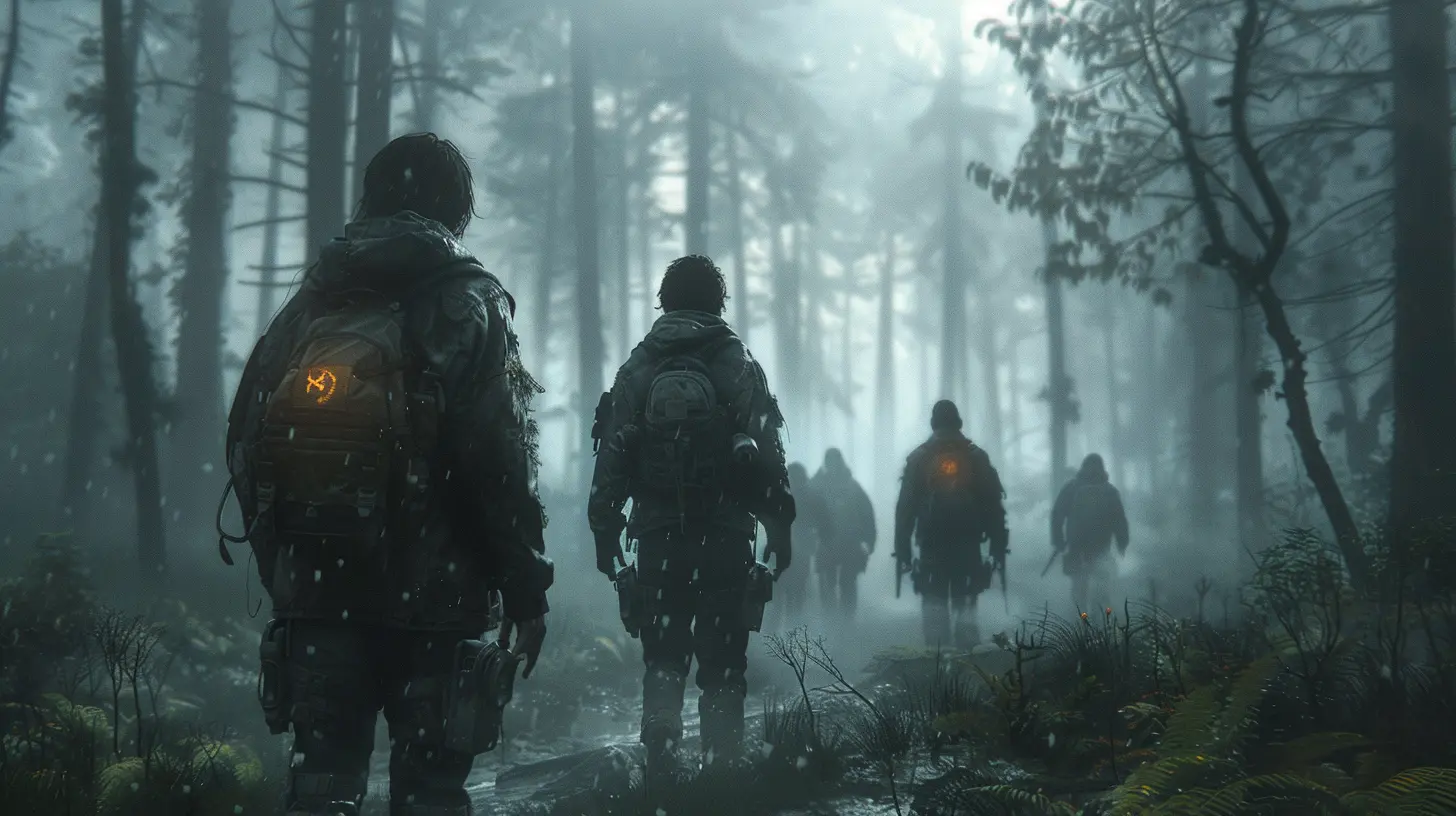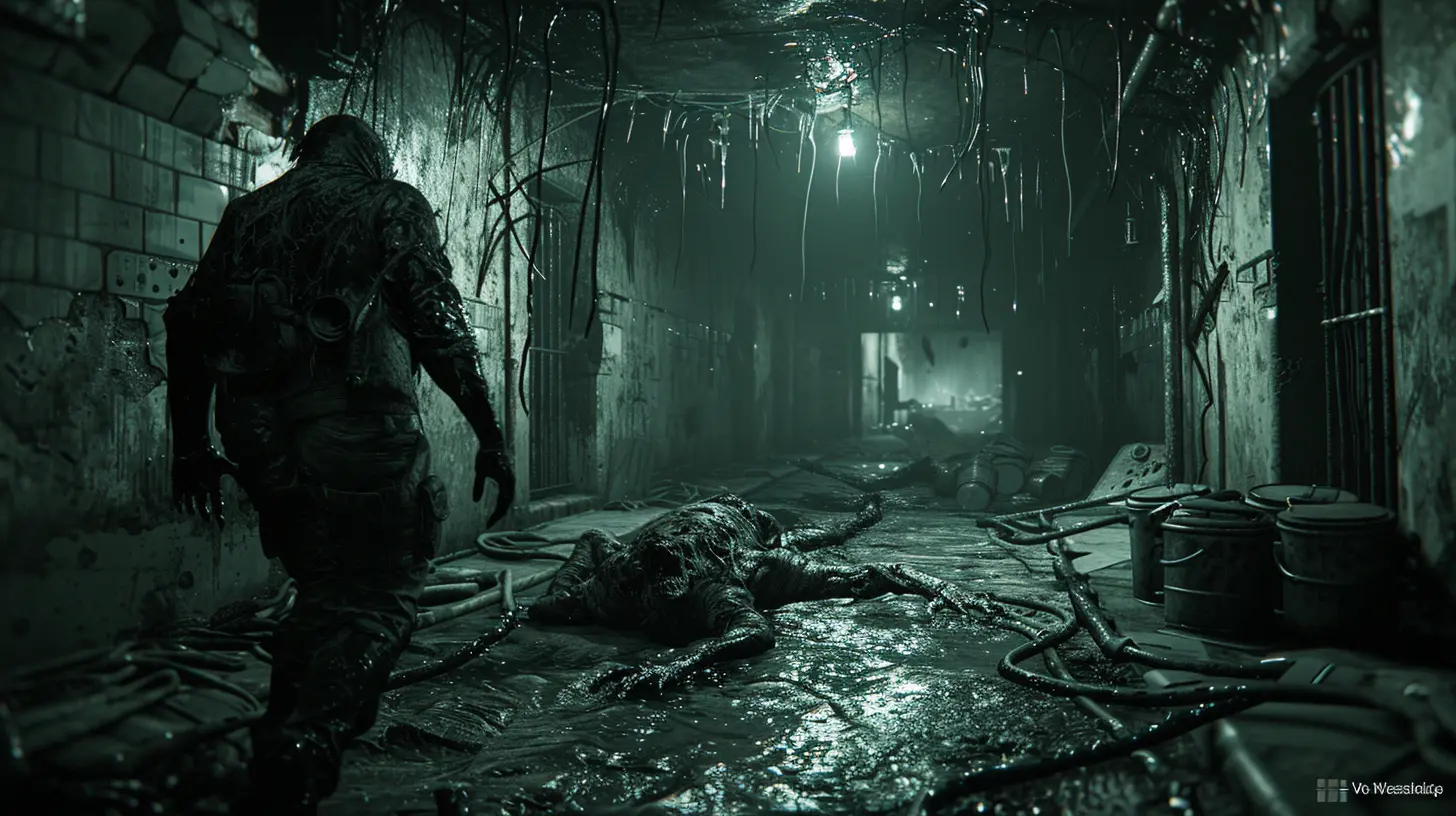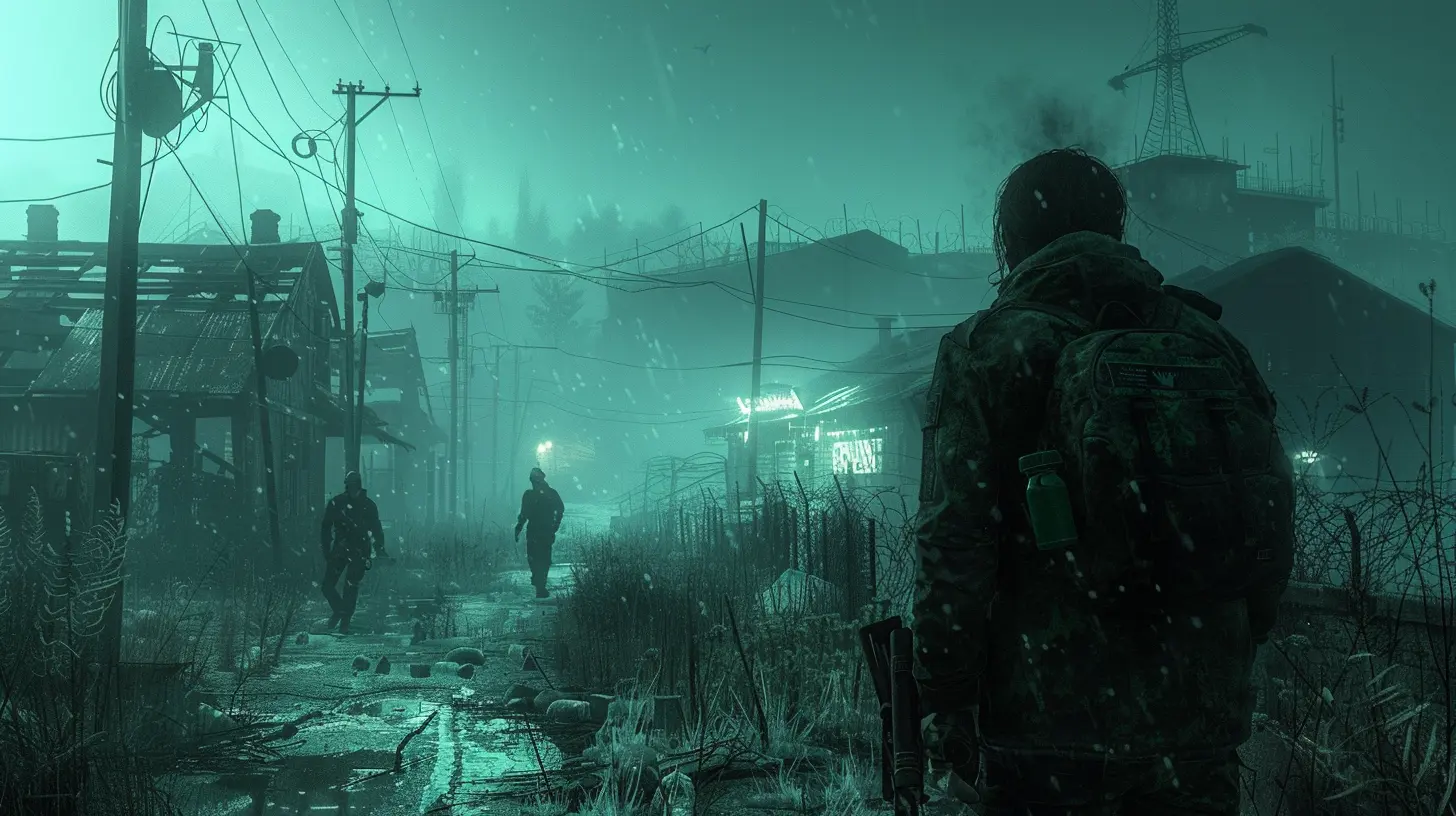The Best Multiplayer Strategies for Survival Horror Games
28 October 2025
Survival horror games have a knack for being unforgettable. They hit that sweet spot between white-knuckle tension and exhilarating teamwork when played in multiplayer mode. But let's be honest—jump scares and adrenaline-pumping encounters aren’t the only ingredients for success in these games. You need strategies, especially when a group of friends (or random players) is thrown into the madness. Whether you’re facing hordes of the undead or unraveling an eerie mystery, having a solid game plan can separate the surviving legends from the screaming, disorganized mess.
So, if you’re looking to up your survival horror multiplayer game in titles like Dead by Daylight, Phasmophobia, or The Forest, I’ve got you covered. In this guide, I’ll break down the best multiplayer strategies to not only make it out alive but to do so with style.
1. Communication Is Key (Seriously, Use Your Mic!)
Survival horror multiplayer games are where communication can literally save your life. Think of it as the digital equivalent of yelling “RUN!” to your friends in a horror movie. Without clear communication, you risk stepping on the wrong tripwire or getting ambushed by that monster lurking in the shadows.Tips for Effective Communication:
- Keep Calm and Speak Clearly: Panicked yelling isn’t helpful (and honestly, it’s just annoying). Share important info, like enemy locations or objectives, in a calm tone.- Use Short, Direct Commands: "Behind you!" works way better than "Oh no, oh no, look out, something’s there, I think behind... or wait, maybe the left?”
- No Mic? Use In-Game Signals: Many games have ping systems or hand signals for non-verbal communication. Master these!
Also, don’t forget to crack a joke here and there (when you’re not being hunted). A good laugh can lighten the mood and keep everyone focused.
2. Divide and Conquer, but Stay Tight
You know that old saying about safety in numbers? It’s true... most of the time. In survival horror games, it’s sometimes smarter to divide and conquer—but only if you carefully coordinate. If everyone runs off solo to “explore,” that’s how horror movie clichés start. Don’t be that person.When to Stick Together:
- When the enemy is a player (e.g., the killer in Dead by Daylight). Splitting up makes it easier for them to pick you off one by one.- In high-threat zones where instant death is a real possibility.
When to Split Up:
- Exploring for items or clues in a massive map like Phasmophobia’s asylum.- Completing simultaneous objectives (think generators in Dead by Daylight or gathering resources in The Forest).
The trick is to keep your group flexible. Stick together when danger is high, but don’t hesitate to split temporarily if it’s necessary for progress.
3. Master Your Role in the Team
Every survival horror multiplayer game has its own roles—whether explicitly defined or not. And trust me, knowing your role is crucial. Are you the team medic? The fearless scout? The sneaky one who always seems to avoid the killer’s gaze? Figure it out and lean into it.Common Roles:
- The Strategist: Keeps the team on track and calls the shots during high-stakes moments.- The Tank: Draws enemy attention and takes the hits while others carry out essential tasks.
- The Supporter: Stays back to heal teammates, repair tools, or assist however needed.
- The Scout: Moves ahead to gather intel, locate resources, or find the safest path forward.
Don’t try to be a Swiss Army knife and do everything. Stick to what your team needs most, and trust your friends to cover the gaps.
4. Resource Management Can Make or Break You
Every bullet counts. Every medkit matters. If survival horror were a game of Monopoly, you’d treat every item as precious real estate. Hoarding is tempting, but sharing resources with your team is usually the smarter move in the long run.Resource Tips:
- Prioritize Healing Items: A healthy team is a winning team. Don’t let anyone hoard medkits unnecessarily (unless they’re the team medic).- Save Ammo for Big Bads: Don’t waste precious ammunition on weaker enemies. Use melee weapons or dodge skills instead.
- Coordinate Resource Use: If your group has limited flashlights, batteries, or tools, designate who uses what and when. Don’t all burn through your resources within the first five minutes.
Think of resources as lifelines. Use them wisely.
5. Know Your Enemy (And Their Weaknesses!)
Whether you’re up against supernatural entities, bloodthirsty killers, or straight-up mutant monsters, survival starts with understanding your enemy. Each horror game’s antagonist has unique traits, so take time to study how they operate.How to Outsmart Your Enemy:
- Observe Behavior Patterns: Many enemies have predictable routines. If the killer always patrols specific areas, avoid those zones.- Exploit Weaknesses: Some games let you blind enemies with flashlights, set traps, or use sound to distract them. Master these mechanics ASAP.
- Stay Silent or Noisy (Depending on the Game): In stealth-based games, silence is golden. But in others, creating chaos might work better to disorient your enemy or split their focus.
Knowing the “rules” of your enemy is half the battle. Don’t just run; outthink them.
6. Stick to the Objectives
You know what’s scarier than a lurking monster? Watching your team get distracted by every shiny object while the clock ticks down. There’s nothing worse than failing because someone decided to break off for “just one second” to loot a random room.Pro Tips for Objective-Focused Play:
- Prioritize Objectives Over Fights: In most survival horror games, your goal isn’t to kill enemies—it’s to escape or complete tasks. Don’t waste time picking fights you can’t win.- Split Objectives When Needed: We covered this earlier, but it bears repeating. Don’t all pile onto one objective if others are available.
- Use One Person to Keep Watch: While most of the team handles tasks, assign one person to stay alert for threats. It’s better to have someone yell “IT’S COMING!” than to get ambushed.
Remember, shiny distractions are just the game’s way of making you lose focus. Stay on track.
7. Adapt and Improvise
Things will go wrong. It’s inevitable. Your “perfect plan” will crumble when someone gets ambushed, a key item is missing, or a random event throws chaos into the mix. The teams that survive are the ones that adapt.How to Stay Flexible:
- Have a Backup Plan: If Plan A fails, always have a Plan B (or even a Plan C).- Learn from Mistakes Quickly: Did splitting up get someone killed? Stick together next time. Adjust often and fast.
- Stay Positive: Panic leads to poor decisions. Keep the mood light and encourage each other when something doesn’t go as planned.
Think of it like playing chess against a Grandmaster: always be prepared to pivot.
8. Don’t Be a Lone Wolf
This should go without saying, but let me spell it out—survival horror multiplayer is MULTIPLAYER. It’s not “me-first horror.” If you’re constantly leaving your team behind to save your own skin, you won’t just lose friends; you’ll lose the game.Ways to Be a Good Teammate:
- Cover for Others: If a teammate is cornered, distract the enemy or buy them time to escape.- Share Resources: Remember when I said every medkit counts? That means sharing with teammates in need.
- Revive When It’s Safe: Don’t let fallen teammates stay down if you can safely bring them back into the fight. A group is stronger than a lone survivor.
A lone wolf might survive for a while, but teamwork will always lead to better outcomes.
9. Learn from Every Failure
Not every game will end in glorious survival. In fact, many of them won’t. But every failure is a chance to learn. What went wrong? Was it poor communication? Bad resource management? A teammate rushing ahead? Take mental notes and improve your strategy for the next terrifying round.Conclusion
Surviving in a multiplayer horror game isn’t just about being good at video games—it’s about thinking like a team, staying adaptable, and keeping your cool under pressure (even when something is breathing down your neck). Communication, planning, resourcefulness, and teamwork can mean the difference between survival and becoming another statistic in the game’s kill count.So, grab your friends, fire up your mics, and give some of these strategies a shot the next time you dive into a multiplayer survival horror game. Who knows? You might just make it out alive... or at least outlast the others.
all images in this post were generated using AI tools
Category:
Game StrategiesAuthor:

Whitman Adams
Discussion
rate this article
1 comments
Nyx Wood
Surviving horror games with friends? It's like a group therapy session where everyone runs away screaming! Remember, teamwork makes the nightmare work—just don't be the one who accidentally trips over the only log in the dark. Happy haunting, survivors!" 🎃👻
October 28, 2025 at 5:01 AM

Whitman Adams
Absolutely! Teamwork is crucial in survival horror—just remember to communicate and watch each other’s backs (and feet) to avoid those classic trip-ups! Happy haunting! 🎃👻


